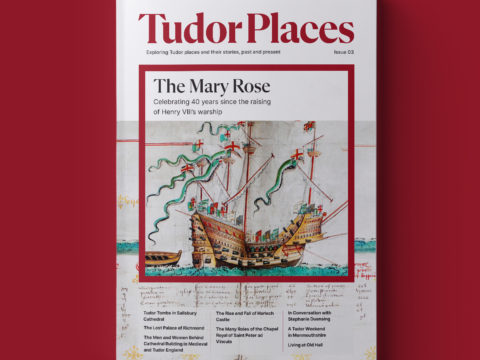Field of Cloth of Gold
Le Camp du Drap d’Or
Chapter 2 : French Preparations
The preparations for the French participation in the Field began on 22 February 1520. While at Cognac, Francis authorised the preparation of tents to house the French court around the town of Ardres. Work began immediately some 320 miles away at Tours which lies on the lower reaches of the Loire river at its confluence with the Cher. Long an important cloth town, here the canvas, silks and other materials needed to make these tents were assembled, cut and sewn together as panels by some 170 men and 120 women. They worked steadily for several months to produce an estimated 300 to 400 tents that would be combined to create large pavilions for the French royal family and the leading nobles of the realm at Ardres.
The surviving inventories list hundreds of yards of the fine cloth of gold that gave the 1520 event its name. They also account for lengths of cloth of silver, damask, silk, satin, velvet and velour mostly of blue, violet and crimson, many of them strewn with fleurs-de-lis, together with many lengths in the royal livery colours of white, tawny and black. When ready, the canvas panels and their covering fabrics, were loaded for carriage up to Ardres by some 400 pack horses. The tallest and largest of the pavilions constructed using these tents were for the king and his immediate entourage. The king’s main tent was 120 feet high, supported by two massive ships’ masts lashed together. It was dressed overall with cloth of gold and had three broad stripes of blue velvet strewn with gold fleur-de-lis. At the pinnacle stood a six feet high figure of Saint Michael painted in gold and blue, the patron saint of the French monarchy and its order of chivalry. He held a lance in one hand and a shield in the other and at his feet lay Lucifer, in the form of a serpent, trodden down in defeat.
Saint Michael also presided metaphorically over the tournament to celebrate the Anglo-French peace. It began on 11 June and continued for about ten days in a specially constructed area between Ardres and Guînes. The preparation of the tournament field was a joint Franco-English undertaking. Carpenters, bricklayers and pioneers worked alongside each other and another joint civil project like this would not be repeated until the construction of the Concorde aircraft in the 1960s and the Channel Tunnel in the 1990s. In return for agreeing to come on to English territory to meet Henry on 7 June, Francis was given the honour of determining the competitions which included jousting at the barrier or tilt, a mounted free form combat called a ‘tourney’ and fighting on foot over barriers. Francis fought alongside, not against, Henry in these competitions, leading mixed teams of English and French knights against all comers. Although the standard of jousting was not particularly high, Francis acquitted himself well - despite being slightly injured at one point.
On each of the two Sundays and on the penultimate day of the event, there was no competition and each court entertained the leading members of the other. Simultaneously, Henry went to Ardres and Francis to Guînes. It seems that as well as the tents erected, Francis had a residence or ‘hôtel particulier’ in Ardres itself and this is where Henry was welcomed to banquets by a heavily pregnant Queen Claude and Francis’s mother, Louise of Savoy. The courtier Robert de la Mark said that the residence ‘was completely newly built and was fine enough for a town house; it had fairly spacious lodgings and in that said place was feasted the king of England’. There are only a few snippets of information about Francis’s lodgings in the town, but they may have been designed by the Italian architect, Domenico da Cortona, who is recorded as doing (albeit unspecified) work for the king at Ardres. He is known to have built several temporary banqueting houses for Francis on other occasions. Like the English temporary banqueting house that Henry built at Guînes, Francis’s hôtel had a principal banqueting hall. Another reception room was hung with cloth of gold and cordelières or ‘friars knots’, one of the personal emblems of Francis, a punning allusion to his patron saint, Francis of Assisi.
An unidentified Italian observer thought the temporary residence at Ardres, ‘very beautiful, but neither so beautiful nor so costly as that of England’. The English chronicler Edward Hall also described another banqueting house set up for the king directly under the walls of Ardres and connected to the royal residence by a covered gallery. This house ‘of solace and sport, of large and mighty compass’ was held up by a huge central mast and featured a striking constellation ceiling which Hall says was ‘all blue, set with stars of gold foil, and the orbs of the heavens by craft of colours in the [ceiling], were curiously wrought in manner like the sky or firmament’. Unfortunately, it seems not to have been finished in time and was not used.






